“I will never be able to take a picture of all my close friends at our victory party,” says photographer Julia Kochetova
Her photos covering the war in Ukraine have been on the pages of Der Spiegel, Vice News, Bloomberg, The Guardian and Reuters. She is a laureate of the Emmy Award and one of the World Press Photo 2024 global winners.
Photojournalist Julia Kochetova has documented the war for ten years, showing civilians' lives and the military's activity.
For Julia, being a photographer is more than a job. Listening to her speaking about her photos, one understands at once: each of them carries a part of her heart and soul.
Advertisement:Through her camera lens, Julia sees not only a scene, but a person.
She truly believes in the possibility of changing someone's life for the better through photography.
"There's no need to try to present the full scale of the war from a drone's perspective, showing hectares of burnt-out fields. You need to find a story of a person. For me, it is essential that the subject of my photo has a specific name," Julia notes.
Which photo was the most terrible for her, and which one could never be taken?
Can the real war be captured only on the front line? How do foreign and Ukrainian photo correspondents see the Russian-Ukrainian war differently?
Ukrainska Pravda spoke about this with Julia Kochetova. Below is a short version of the interview.
"I'm absolutely sure that it is worth telling a person's story, and it is the most important"
One of your projects starts with the phrase, 'I wish these photos never existed'. How often do you repeat these words to yourself? There is probably no such day when I wouldn't repeat them to myself.
I encounter death a lot, so it is hard to be happy about the photos, even if there is a great deal of life, strength and courage in them.
Advertisement:You say it is crucial for you to show the war via a specific name and face. Do the lives of your photos' heroes change after they get published?
I'm absolutely sure that it is worth telling a person's story, and it is the most important [part of my work].
Take the story of an older woman from Bucha, for instance, although this story is not about my photography. I arrived in the liberated Bucha with my colleagues --Oleksii Furman and Stas Kozliuk.
That is when we met this older woman, Mariia: she held a piece of bread in her hand and apologised for her dirty jacket, which she had been wearing for a month.
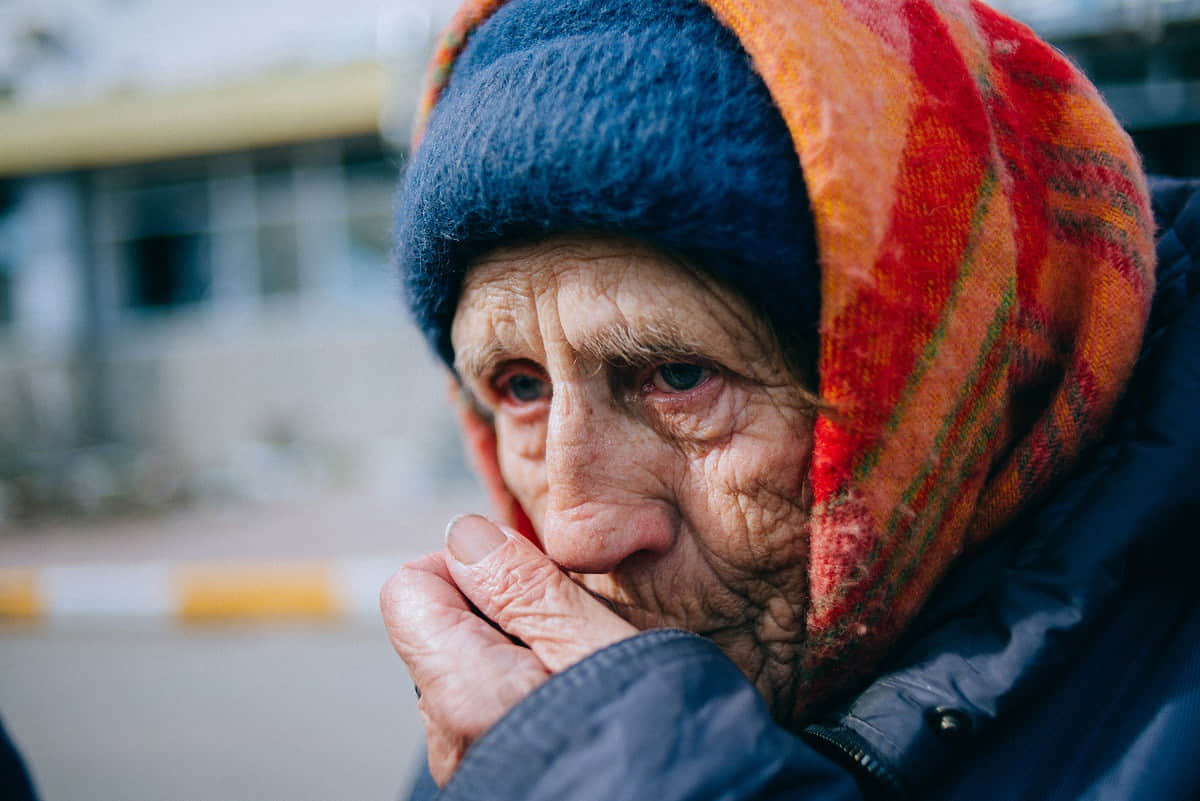 Mariia is 84. During the occupation, Russians searched her home several times, checking if she was hiding Ukrainian soldiersPHOTO: JULIA KOCHETOVA
Mariia is 84. During the occupation, Russians searched her home several times, checking if she was hiding Ukrainian soldiersPHOTO: JULIA KOCHETOVA
Mariia didn't have any way to contact her relatives: her phone could not be charged, so her family didn't know that she survived.
We turned on her phone, but there was no sim card inside. And I saw how, at that moment, life darkened in her eyes as she couldn't remember any number, which was her last hope.
That evening, my colleague Stas published her portrait on Facebook, along with all the information Mariia had provided about herself.
And then magic happened -- everyone wanted to help find her relatives.
The next morning, Lyosha called me: "We've found her family. Her son is heading to Bucha". At that moment, I felt that you change much more by changing one person's life.
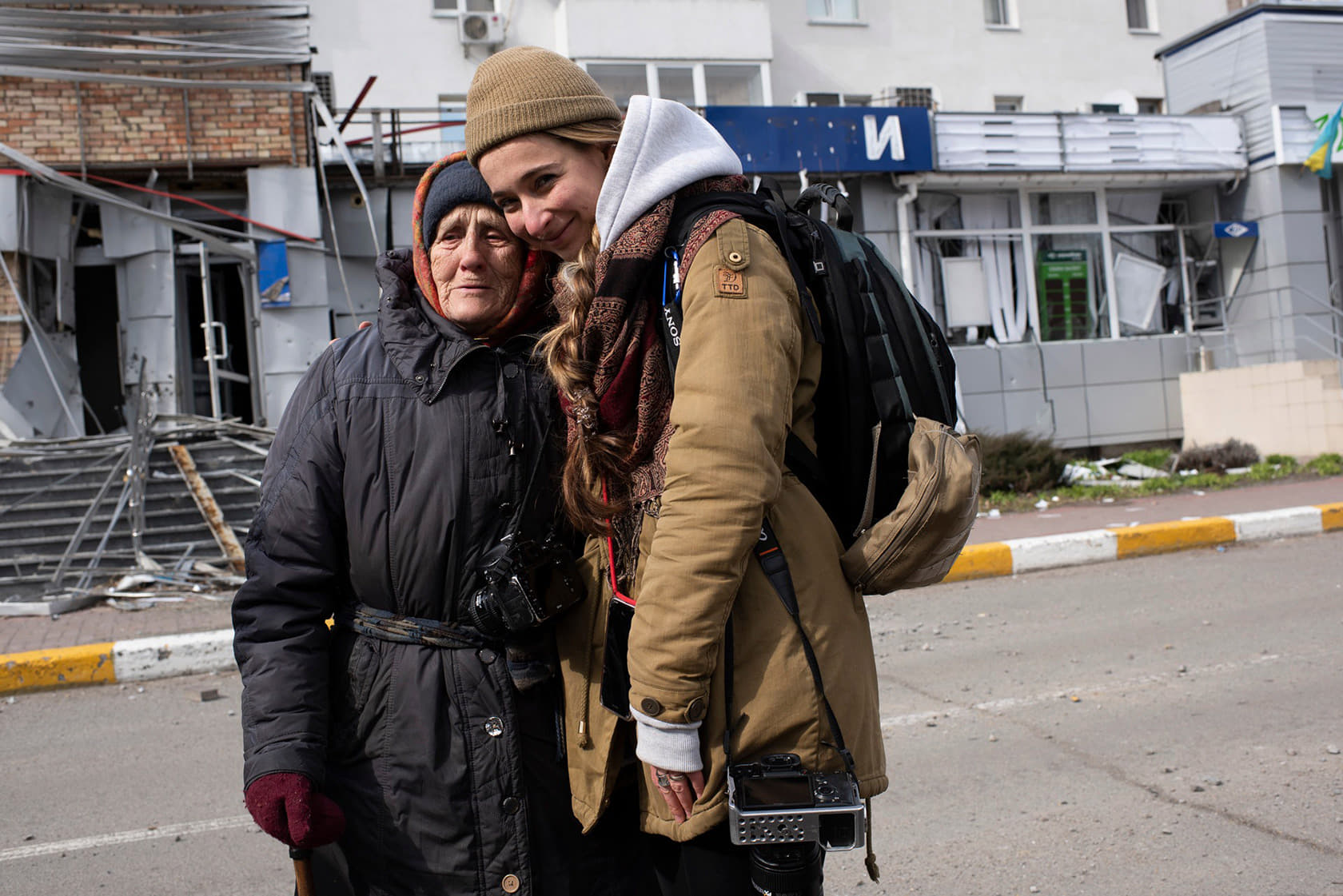 Julia recalls bursting into tears when she heard of finding Mariia's relatives.PHOTO: Oleksii Furman
Julia recalls bursting into tears when she heard of finding Mariia's relatives.PHOTO: Oleksii Furman
Do you remember your first war photo?
I don't remember which photo was technically the first.
But let's go back to Crimea, as this war started with the peninsula's annexation.
I was in Simferopol with my colleagues: at a military base with Russians standing around, while our soldiers were receiving parcels behind the wall.
I have a shot of one of them who came up to a gap between the gate and the wall, turned to one side, and showed his chevron to me, with the inscription 'Ukraine'. For me, this specific person started the countdown to this war.
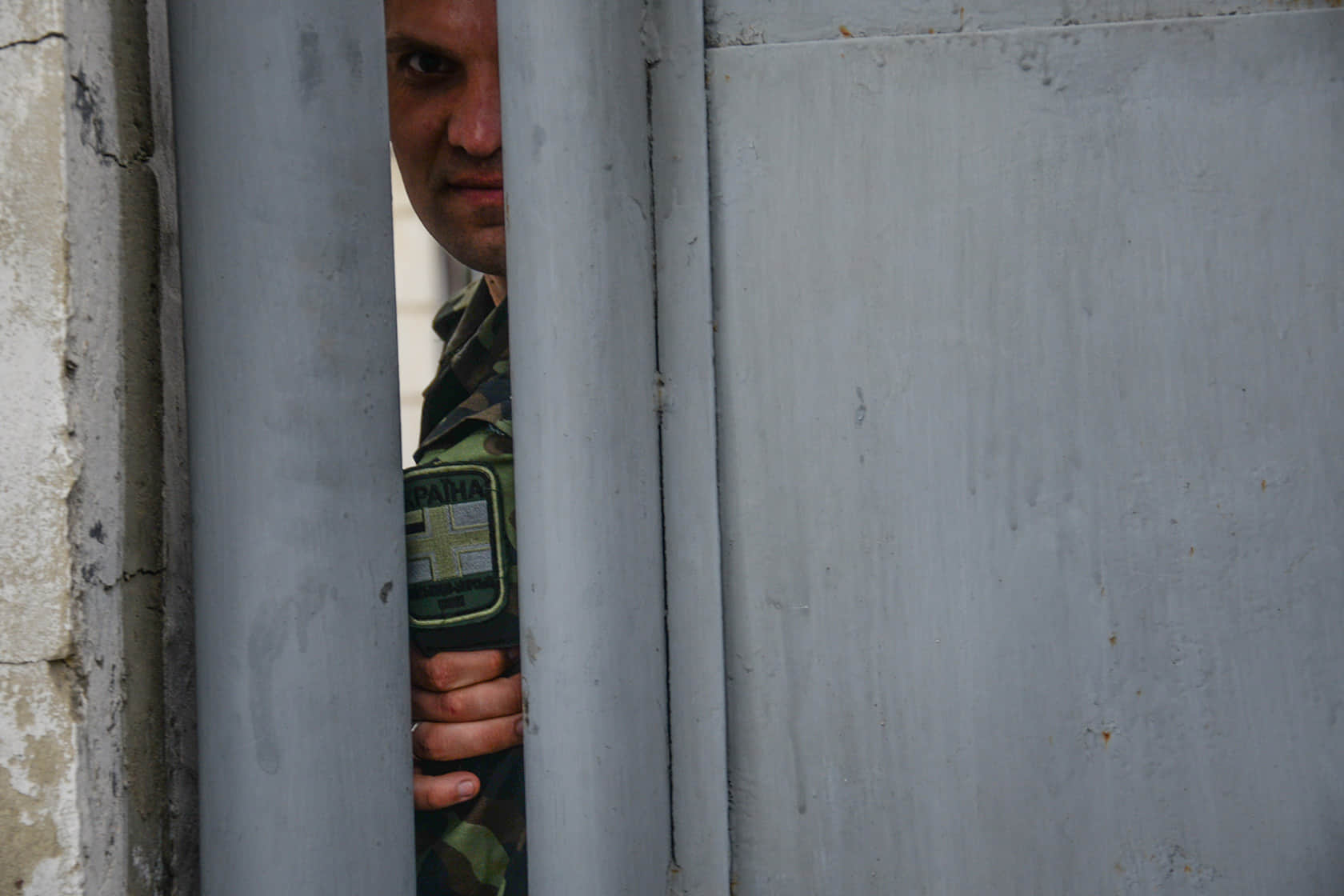 For Julia, the photo of this Ukrainian soldier started the countdown to the warPHOTO: JULIA KOCHETOVA
For Julia, the photo of this Ukrainian soldier started the countdown to the warPHOTO: JULIA KOCHETOVA
About the first photos in the east of Ukraine, that would probably be the crossroads that I passed multiple times: on the right was Sloviansk, behind was the road to Izium, to the left was a sign to Kharkiv, forwards was Semenivka and the bombed-out psychiatric hospital.
In the summer of 2014, that crossroads seemed to be the most horrific thing possible: this was the quintessence of the war and that's how everything would look. It felt very creepy at that crossroads.
And now, it has become familiar and ordinary.
Advertisement:What was your first photo after 24 February 2022? I should probably be ashamed, but my first photo on 24 February was a selfie published on Instagram. I have no idea why it worked: my face, the hashtag, or my words written in English, 'Look, world.
That's called decisive moment'.
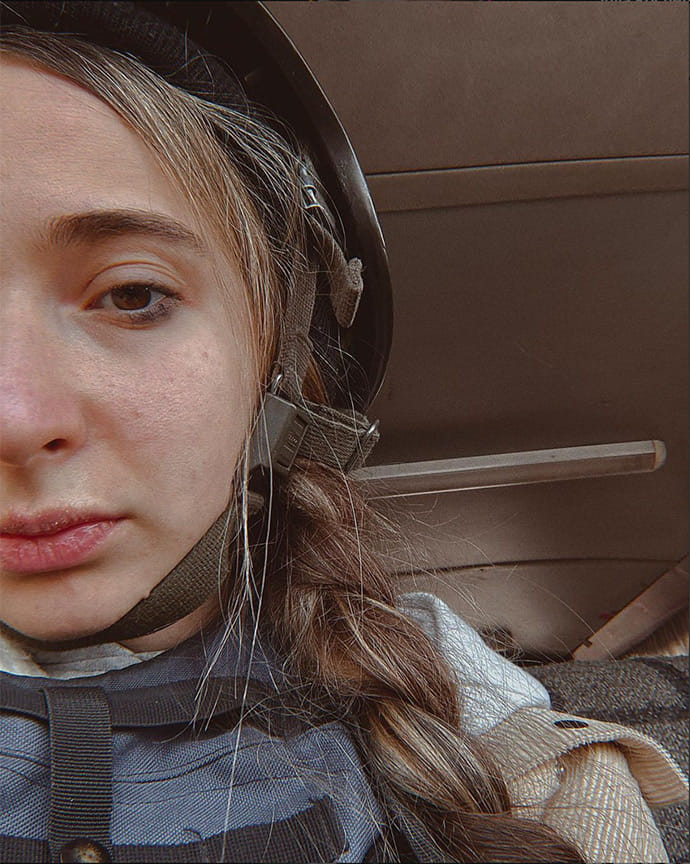 Julia's selfie, published on the first day of the full-scale invasion, reached four million viewers on her Instagram page PHOTO: JULIA KOCHETOVA
Julia's selfie, published on the first day of the full-scale invasion, reached four million viewers on her Instagram page PHOTO: JULIA KOCHETOVA
My Polish friends wrote to me: "We've seen you in the news. How are you all there?" The post attracted flocks of Russian bots in the comments, but at the same time, thousands of people worldwide started following me.
I realised that this personal story works, so over the next six to seven months, I went on publishing for the sake of history, following a kind of a neurotic impulse.
"A picture of our victory party, where all my loved ones are alive, will never happen again"
Which of the stories you have shown is the most important for you personally?
Probably, a photo of a death.
I arrived in Kherson three or four days after its liberation. I stood in a kiosk and waited for a cup of coffee when a woman entered, asking the barista: "So what shall I do with the corpse?" Such conversations don't happen accidentally, and you don't speak to a barista about such things by chance.
So, I instinctively followed her.
A woman was lying in a nearby yard. There were signs of violent death and rape: she was without trousers, and her face was covered. She lay in the yellow autumn leaves, fenced-off with a ribbon.
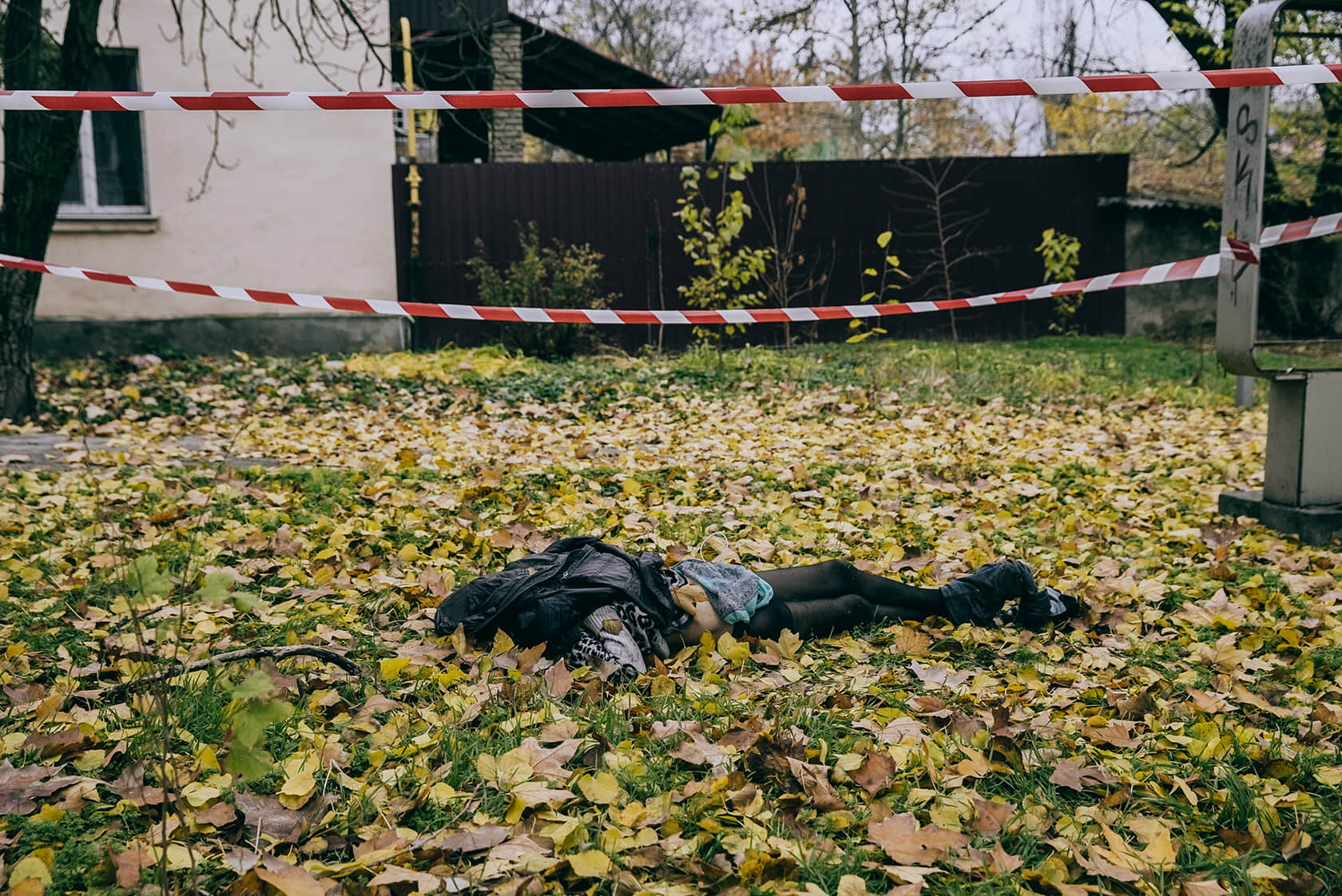 This photo of a dead woman, found in liberated Kherson, is one of the most important shots for JuliaPHOTO: JULIA KOCHETOVA
This photo of a dead woman, found in liberated Kherson, is one of the most important shots for JuliaPHOTO: JULIA KOCHETOVA
All I wanted to do at that moment was to run away so as not to see that reality.
At the same time, I realised that I was the only person with a camera, and the only person who could capture all that, and I had to shoot. What is the hardest story you had to cover during the war? The hardest story was not about showing classic death, with wounds or blood.
The hardest one was the coffin of my friend Oleh Rybalchenko, which was carried from St. Michael's Cathedral with his portrait at the front. It was me who shot that portrait.
And that is the most terrible photo for me.
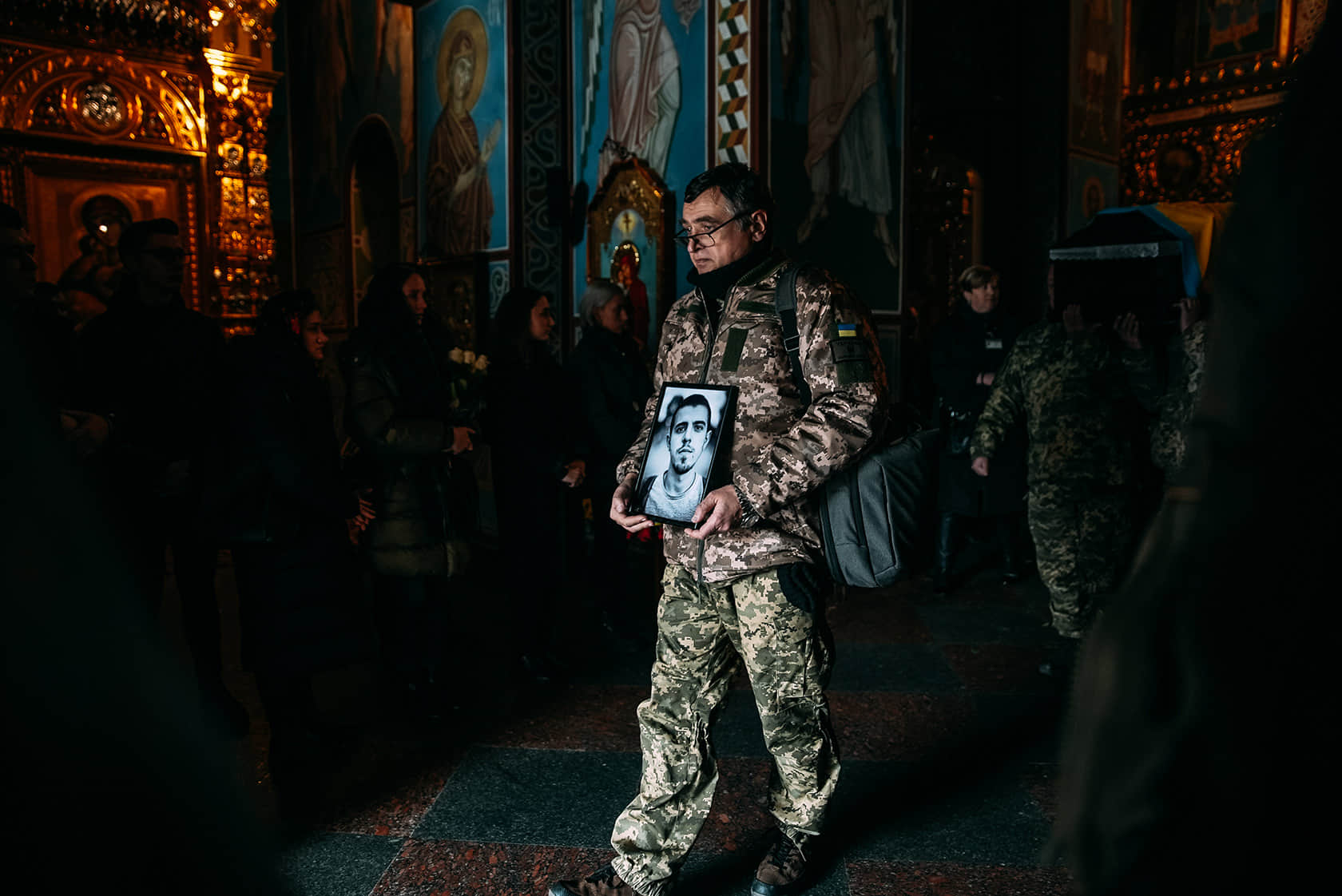 The mourning ceremony for Oleh Rybalchenko who died in the battle for Klishchiivka in the Donetsk regionPHOTO: JULIA KOCHETOVA
The mourning ceremony for Oleh Rybalchenko who died in the battle for Klishchiivka in the Donetsk regionPHOTO: JULIA KOCHETOVA
You can't get used to it. Living with that is difficult, but you have to live. Throughout this time, has there been anything you really wanted to shoot but, unfortunately, you will never be able to?
Probably, that is a photo of our victory party where all of my close friends are alive, all of them in a blurred group portrait, slightly unfocused and with bad composition.
I am absolutely sure there will be such a party, with a lot of silence.
But not everyone can be in this photo. There won't be this photo; I will never take it.
If I could exchange my whole archive for this single photo, I would like to shoot this group portrait. Maybe even a selfie.
But this photo will never happen.
Advertisement:"One day, a louder and bloodier explosion will happen somewhere else, and everyone will book a ticket to another country"
Capturing a war is a great challenge. Is there anything you will never shoot or publish for ethical reasons?
If I am the only person with a camera, I will definitely shoot. You can have a different attitude.
But this is a job.
As for publication, there are nuances: you have time for analysis. I would never cause even more pain with my camera. I always try to be highly sensitive and respect death.
Any death.
Obviously, I will probably never shoot mourning ceremony scenes when relatives have the last seconds to say goodbye to their dearest ones. I know that my camera and I have no moral right to steal these seconds, to interfere, and to come too close with my lens to someone's grief. I try to keep this distance and feel very nervous when someone acts differently.
When I see other photographers' non-empathetic and immoral behaviour, I always tell them about it.
During the first months of the full-scale war, I was that unpleasant lady sitting at the table with foreigners: I wanted to shout at them, explaining that you can't behave like that with my fellow people, and that you constantly retraumatise them with your stupid questions, and you are absolutely insensitive and numb to pain.
But then I calmed down, realising that most of them have the privilege of having grown up in families with five generations who have not experienced Soviet repressions, tortures, exile, holodomors, deportations... They don't have this collective trauma which we carry inside. That is why their emotional spectrum is limited.
How often do you face non-empathetic behaviour from your Ukrainian and foreign colleagues?
I don't want to generalise, but foreign colleagues treat us mainly as 'just another war', and that affects how they behave. I remember the mourning ceremony ofYana Rykhlitska ('Yara'), a paramedic of the 93rd brigade. The funeral service was held in a very small room filled with people wishing to say goodbye to her.
And right above the coffin stood some correspondent with a camera. I thought he might want to shoot something very close, some detail, and would step aside later. And then, peeking over his shoulder, I saw him check his emails above her body.
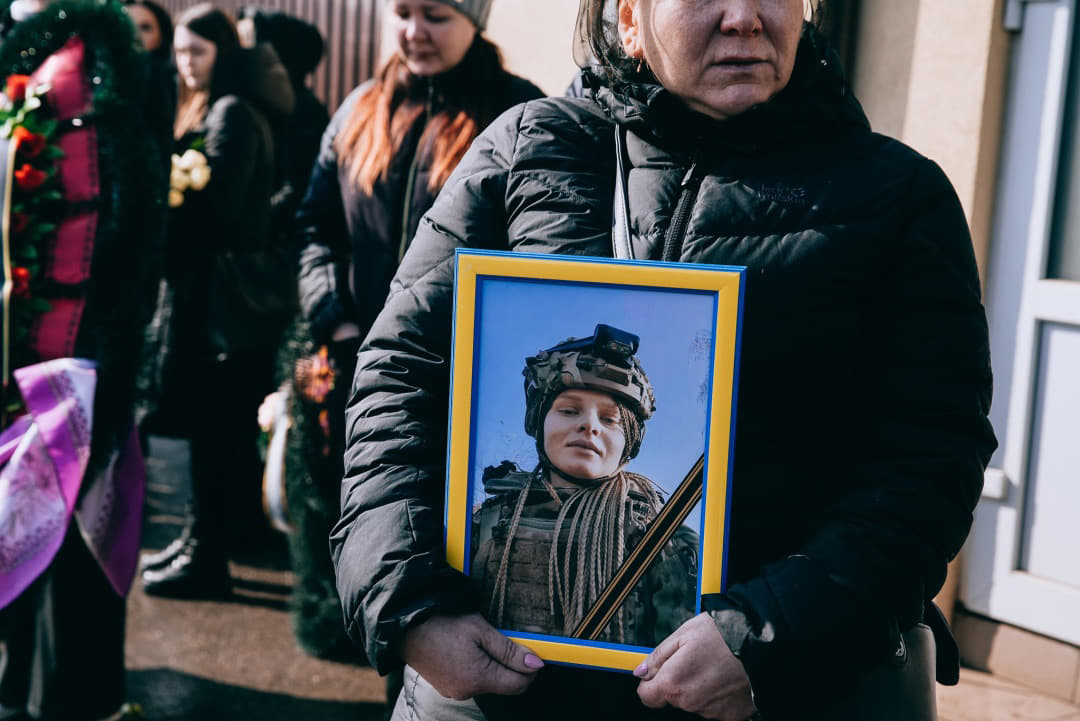 Yana (Yara) Rykhlitska, a 29 year-old volunteer and paramedic of the 93rd 'Kholodnyi Yar' brigade, died during the evacuation of the wounded near BakhmutPHOTO: JULIA KOCHETOVA
Yana (Yara) Rykhlitska, a 29 year-old volunteer and paramedic of the 93rd 'Kholodnyi Yar' brigade, died during the evacuation of the wounded near BakhmutPHOTO: JULIA KOCHETOVA
Or take another story, about a man with his old mother lying on an improvised stretcher at the crossing over Irpin.
They had just left Irpin, and he couldn't figure out where to go. Nearby, four or five journalists were smoking and taking photos of this woman lying on the ground.
This made me so angry that I said: "Listen, you've taken your shots, but he needs a helping hand to get her over the river. Maybe you can help?
I will carry her too'. Fortunately, they agreed. But I felt disgusted, realising that while someone needed help, they were just shooting, smoking, and imposingly chatting, not noticing someone's grief in front of them.
This is beyond good and evil, in my mind.
Advertisement:You once said that foreign media has a great demand for suffering and death. Do you know the reason why?
I have an explanation, which is very unpleasant: it is an industry.
I've often heard [a foreign journalist say]: "Let's take a photo of a woman in front of a bombed house. She should cry.
And it would be nice if she had lost someone."
For many, this is a business trip to just another war zone. I was once asked: "How do foreign and Ukrainian views of war differ?" And I said: "[The foreign view is]: More blood". That's how it is, unfortunately.
For many foreign reporters, our war has become an easily-accessible war: to get to Ukraine, you just need to get on the train from Poland, while getting to Iraq or Afghanistan is much more expensive.
We have become a story where you can quickly jump in and start building a career.
One day, everyone will leave, and our war will become boring to foreigners: it will be too long and too bloody. One day, a louder and bloodier explosion will happen somewhere else, and everyone will book a ticket to another country. But we will not go anywhere because it is not a business trip for us -- it's our real life with real people.
Some photographers covering the war take staged photos. How do you feel about that?
Any staged photography is unacceptable if we speak about documentaries or photojournalism. "Repeat something for the camera", "Look this way", "Do that" -- [demands such as this] are part of an artificial reality.
The only acceptable thing in my work is taking a formal portrait to illustrate a story, if you do a reportage about a person and can't take photos of them because they don't do anything at that very moment. But in the photo capture, you note that this specific person is posing for a portrait somewhere within, say, the fortifications in the Donetsk region.
That is the only case when I can intrude into reality.
Unfortunately, working together with the army and the press officers, they offered me something like, 'We'll drive the equipment to the field for you now [where no actual combat is taking place], you'll sit on the armour, and we'll drive you while you take pictures from the armour'. I've always refused, unfortunately, too often hearing in return, "Well, we've given a ride to some colleagues of yours".
As a journalist, I can't deceive my audience. The truth is all we have.
And all these attempts to create some reality are very far from what the war truly is.
Advertisement:"Some stories still stick inside me. I'm not ready to tell"
How often do you note self-censorship on your side?
In the working moment, I always take photos, no matter how scared, unpleasant, or uncomfortable I feel.
At the publication stage, I have an inner censor, of course. First of all, it's about safety: my photos shouldn't show a location or harm those who trusted me with their lives.
Some stories still stick inside me.
I'm not ready to tell some specific facts now or name a division, but I've witnessed a soldier's suicide: I saw that from a drone.
In such sensitive cases, I ask myself, 'If I want to tell an audience about this in detail or publish photos proving that -- what's that for? What can this story show, except one specific person's pain?' Is this self-censorship? In a way, yes.
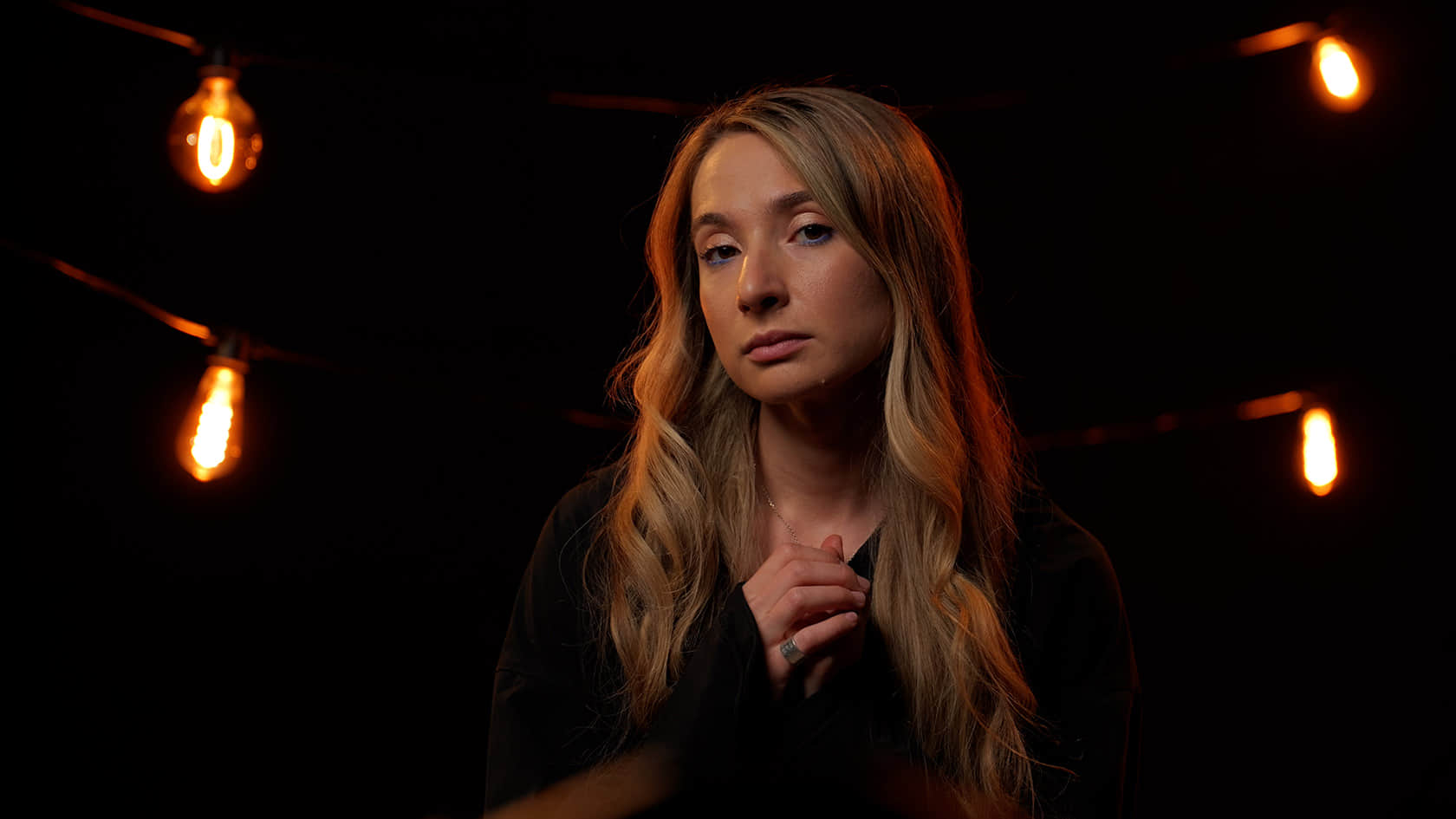 Julia emphasises that she respects her photography's heroes, their stories, and their safetyPHOTO: ROMAN MATKOV, SMB No.
Julia emphasises that she respects her photography's heroes, their stories, and their safetyPHOTO: ROMAN MATKOV, SMB No.
110
-Apart from self-censorship, each journalist has to deal with limitations imposed by military leadership. How would you assess the situation in these two years: has it become easier to work on the front line or vice versa?
Access has never been easy. Unfortunately, it seems to me that the military leadership doesn't quite understand how crucial the media is, how important it is to speak about our war, and that the journalists are not 'enemies', 'Russian spies', and all other 'horrible monsters'.
And that's why we don't have shots of the Kharkiv counter-offensive, and only the GoPro videos from the soldiers' cameras showing people hugging and greeting them.
SS: The same applies to Kherson?
JK: Yes. And I am very glad that the community has consolidated and, due to a collective appeal, finally dismissed Nataliia Humeniuk as Southern Defence Forces Spokesperson [after complaints from the media].
I always respect the military and how they have allowed me to tell their stories. If this relates to their safety, I am ready to discuss that.
But if [their argument regarding access] is just like: "That's what the commander said. Order or reprimand" -- this is a con.
Our work is about telling a story, telling the truth, and being as close as possible to where this story happens. How you do it, how formalised it is, who was aware of it, what commander was reported to -- that is another story.
War is a very dynamic and living organism.
If you want to tell a story about the war, you have to be as dynamic. And that's why our journalists were heading to Kherson through minefields instead of standing at a checkpoint and waiting for some paper to allow them to go.
I know thousands of cases when my colleagues pretended to be civilians, showed their passports, and came in. The fact we have to work in such circumstances is absurd.
I was following a story in liberated Izium, where I was not allowed to go.
I said at the checkpoint: "My friends from the Carpathian Sich battalion are waiting there for me. We visited them before Izium was liberated. We sat in a basement that the Russians attacked with such precision that the ceiling was falling in.
They are waiting for me, and I want to hug them in freed Izium". And a soldier told me: "I'm from Stryi, greet them, please". And that was how we got through.
"You don't have to be in trenches or 200 metres away from the Russians to film the war"
In 2023, you became the laureate of the Emmy Award.
This year, you are among the global winners of the World Press Photo 2024. What do these awards mean for you personally?
No award will win this war. Neither of these awards makes me a better person.
But these awards definitely attract the world's attention. And this is the only thing that warms my heart.
I know for sure that we need this attention. And I am absolutely proud that, for the second year in a row, the most prestigious award in journalism is given to Ukrainian photographers.
Last year's laureate was Yevhen Malolietka. His photo of a maternity hospital, where a bloodied woman is carried on a stretcher, is the symbol of this war, in my opinion. It is much more than capturing reality.
This woman is Ukraine, in fact. Speaking with the military personnel, you can hear from some of them that they are, in a way, addicted to war. As a photographer working on the war, do you have a similar addiction?
I don't know whether I have an addiction to war.
But I am sure that the war has wounded all of us.
Unfortunately, to remember something, we always need a scar. This scar will tighten, it will remain with us, but this doesn't mean we will look at it every morning. We will live with it.
I will return to the war as long as I am able to, as long as my heart beats.
And I hope very much that my heart will beat long after we win this war.
As long as I'm in this moment, in the endless trips through this crossroads with the turn to Sloviansk, I won't think whether it is an addiction or something else. This will hinder my work.
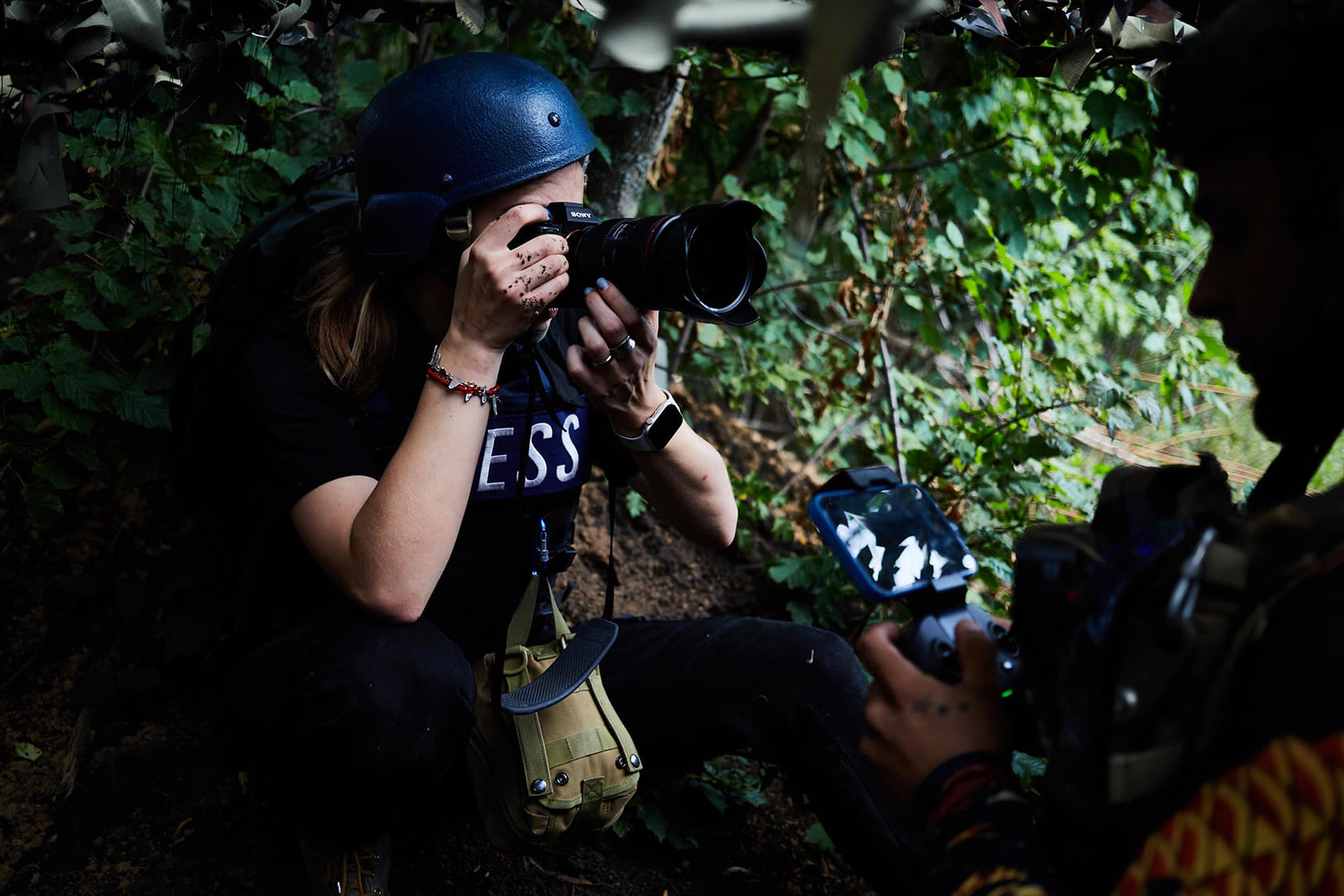 Julia has been covering the war for ten years now, stressing that she will do it as long as needed
Julia has been covering the war for ten years now, stressing that she will do it as long as needed
We have already discussed the shot you would very much like to take, but, unfortunately, will never be able to. Is there anything you still hope to shoot?
The exchange [between Russia and Ukraine] of everyone for everyone: our prisoners coming out of the buses somewhere on the northern border, stepping onto the ground, and hearing: "Glory to Ukraine!" This is the photo I want to take the most.
Sofia Sereda, Ukrainska Pravda
Translation: n-ost (Network for Border Crossing Journalism)